Over 5,300 years ago, a Copper Age man was murdered in the Tyrolean Alps. His body was left on the mountain, frozen in a glacier, and lost to time.
He wasn’t discovered there until 1991, thousands of years after his death, when two German hikers found a preserved body they thought to be recently deceased.
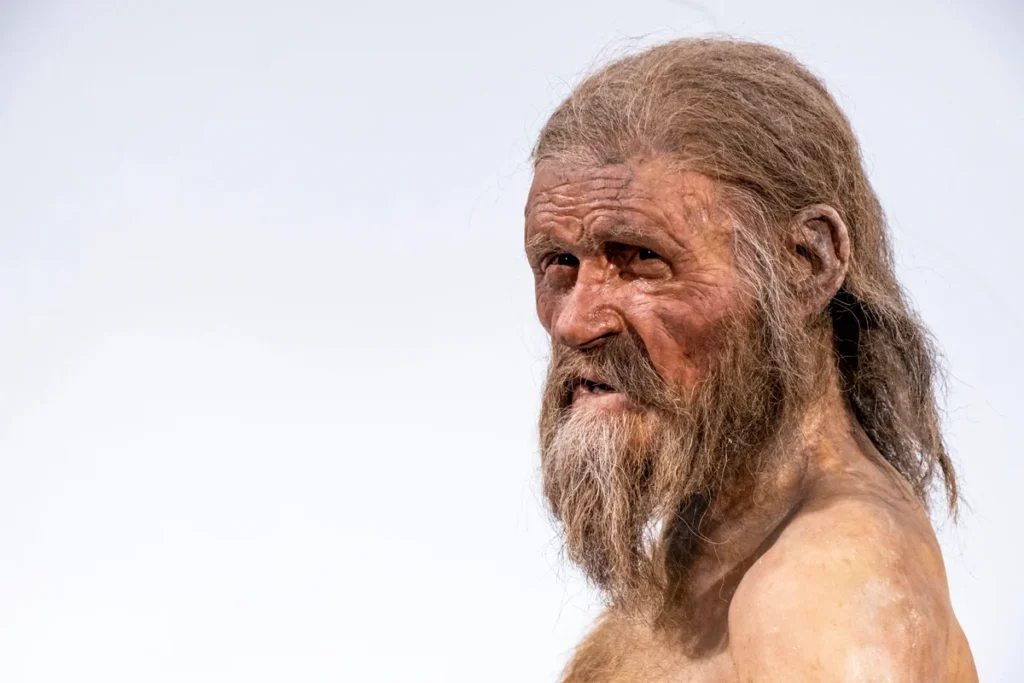

Little did they know that their discovery would lead to a treasure trove of archaeological information.
Ötzi Found
In 1991, Erika and Helmut Simon were on holiday in the Tyrolean Alps.
Their adventures on 19 September near Tisenjoch/Giogo di Tisa in the Schnalstal/Val Senales Valley took them close to the Austrian-Italian border, where they stumbled across an unfortunate sight.
A mummified body, its upper half protruding from half-melted ice, must have been an eerie discovery.
At first, they believed the body to be a victim of a recent accident on the perilous mountain. They contacted authorities on both sides of the border to recover the body, but they were unable to react immediately due to the weather conditions.
It wasn’t until four days later, on 23 September, that Otzi was finally removed from the ice.
At the time, no Archaeologist was present at the scene. The authorities believed the body to be far more recent, which wouldn’t require contacting one.
It wasn’t until after the body was flown down into the Ötztal Valley that they decided they were in over their heads. They sent the body by car to Innsbruck to be studied at the Institute of Forensic Medicine.
The Oldest Human Mummy Ever Discovered
The first expert to see Ötzi was Konrad Spindler of Innsbruck University, who concluded that the mummy was at least 4,000 years old. He didn’t know it then, but he was off by over a millennium.
Ötzi is, to date, the oldest human mummy ever discovered. He lived and died nearly 5,300 years ago, making him much older than the mummies of Egypt.
Much like the hot, arid conditions of Egypt preserved the mummies there, the wet, freezing glacier kept Ötzi in outstanding condition.
Scientific testing tells us he lived during the Copper Age (also called the Chalcolithic) at the end of the Neolithic period. This is only reinforced by the equipment and tools found with his body.
Ötzi’s Personal Items
The items found with Ötzi include a unique copper axe, a longbow, arrows, a quiver, a flint blade, a backpack, part of a bird belt, and two birch-bark containers.
His axe was excellently preserved, and it remains the only one of its kind left on earth. The trapezoidal blade the axe uses is made from 99.7% pure copper, which experts speculate might have been a status symbol. The blade was used often and showed signs of frequent sharpening.
Ötzi’s clothing is extremely important to the scientific record. Textiles and organic matter typically deteriorate throughout the centuries, leaving us no clear idea of what ancient humans may have worn.
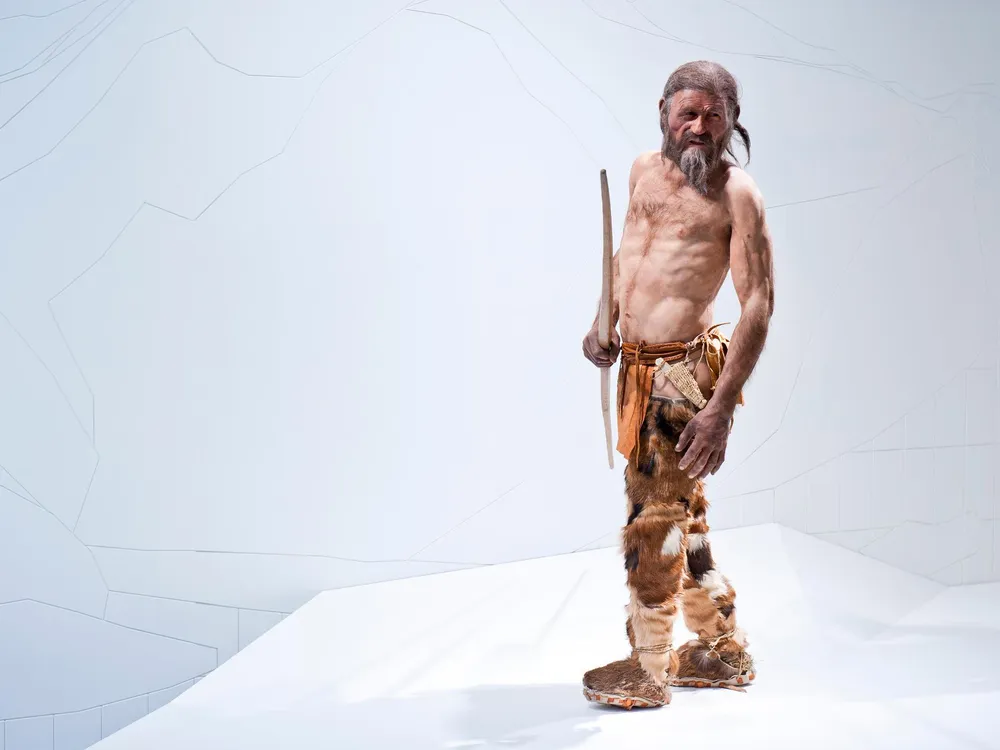
Ötzi’s clothing was mostly preserved, though some pieces were damaged. Experts were able to dissect what remained to give us a clear picture of standard clothing during the time frame.
Ötzi wore leather clothing sourced from multiple different animals. He wore a hide coat, sheep hide leggings and cattle hide moccasins.
His hat was made from bearskins and his leather shoes were stuffed with grass for insulation. He was found with a woven grass mat, which some experts believe was an outer cape of sorts, thought to provide waterproofing during rain or snow.
These pieces give us a good idea of how similar people in the Copper Age may have dressed, but the animal hides also clue us into the type of livestock they raised.
Ancient Tattoos
One of the most interesting things about Ötzi was his wealth of tattoos. During the initial examination of the mummy, 61 tattoos were found littering his dehydrated skin.
We don’t know for sure why he got these tattoos. While some believe they were symbolic or based on a belief system, others think they were more purposeful.
Some of the lines and crosses that make his tattoos appear to be inked over multiple times. These areas were darker, which seemed to imply that he had them redone several times before they faded.
Other tattoos were located over areas of previous injury, like the parallel lines running down his lower back.
Examination of the mummy suggested that he may have suffered some chronic lumbar pain due to deteriorated cartilage in the area. This has led some experts to believe that the tattoos were meant to help with pain or discomfort.
Modern tattoos are, of course, applied with a needle. In Ötzi’s time, these tattoos were formed by rubbing charcoal into small incisions.
The existence of these ancient tattoos led some to believe that the farming culture Ötzi was part of may have practiced some form of rudimentary acupuncture.
Who Was Ötzi?
Of all the tests that scientists have conducted on Ötzi, some of the most telling pieces reveal his identity. Based on bone tissue, DNA, and other measurements, we’ve been able to reconstruct the man who bled out on the mountain so many years ago.
Scientists have determined that Ötzi was between 40 and 50 years old when he died.
Various injuries, tissue damage, and missing cartilage tell us that he would have suffered chronic pain and stiffness, particularly at his joints. He may have suffered from arthritis as well. At the time, living to his age was quite a feat.
He was 5’3” tall in life, weighing about 50 kilograms. This was typical for men of the time, a fact that is supported by skeletal remains discovered from the same period.
It is these burial sites that give us some idea of Ötzi’s status. Some of the personal items found with his body may be consistent with important, powerful men in Copper Age societies.
In 2023, Ötzi’s genome was remapped to discover vital information about him, such as where he came from and what he looked like.
Earlier reconstructions of his face showed a prehistoric man with light skin and brown hair, but new sequencing results show that his skin may have been darker. He might have had a receding hairline as well.
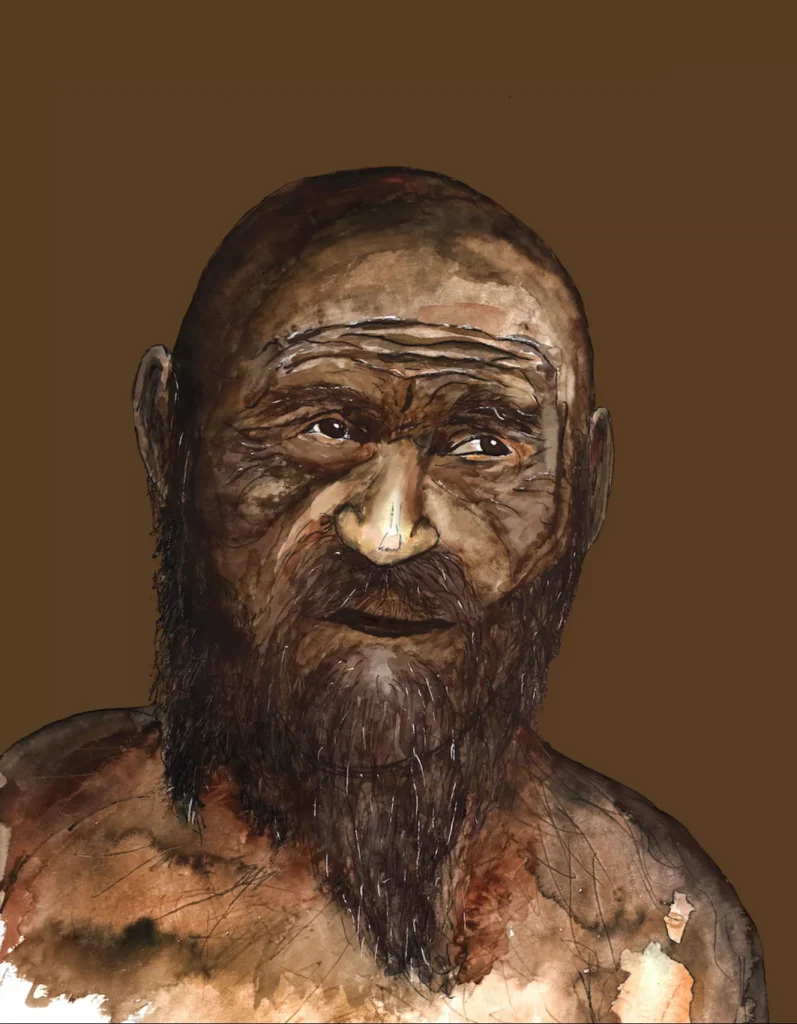
According to this new study, 92% of Ötzi’s DNA could be traced to early Anatolian farmers in Turkey. The rest of his DNA was from various other European hunter-gatherer societies that integrated with his bloodline hundreds of years before he was born.
How Did Ötzi Die?
Based on the condition of his body, there are a couple of theories about how Ötzi ended up on the glacier that preserved him so well.
Early speculation blamed his death on the elements, believing that he froze to death while wandering the glacier and stayed where he fell. While the elements certainly didn’t help his situation, later imaging efforts proved that this theory was simply untrue.
While his body was certainly frozen, it seemed that Ötzi’s demise was more likely due to the arrowhead lodged just below his left shoulder.
Evidence suggests that he was shot from behind, and the orientation of his body in the ice shows that he may have been attempting to pull the arrow out.
Further study of the mummy indicated that he had been hit in the head with a blunt object. This was a serious injury, but not his cause of death. Ötzi’s red blood cells were intact, which is remarkable considering the age of the body.
These blood cells had traces of a clotting protein in them, which shows up when we are injured but disappears quickly afterward. This means that Ötzi probably bled out within minutes after the arrow hit him.
Experts agree that this is the event that caused the death of the Iceman. However, how his body came to be in the glacier is a hot topic up for debate.
Some hold that he bled out where he fell, an ancient murder victim with an unknown attacker. Others suggest an ancient burial rite higher up in the mountains.
However, the body doesn’t show any signs of movement during its five millennia in the ice.
If the mummy was displaced through the movement of ice at some point in the intervening years, there would be signs of wear and tear that just aren’t present.
What Ötzi Taught Us
As the oldest human mummy ever found, Ötzi has given us a wealth of information about the distant human past.
His mummy has been studied more than any other ever discovered. Before we began studying the mummy, there was little to no information about Copper Age societies.
Now, we know what they ate and how they lived. We know that the society Ötzi was part of was comprised mostly of farmers rather than hunter-gatherers, implying the existence of some homestead or central location where they kept livestock.
The leather used in his clothing suggests that they also relied on hunting for some of their diet and materials.
Tattoos and some of the fungal plants found on his body suggest a vague knowledge of medicine and prehistoric acupuncture as well.
Conclusion
Today, Ötzi and all of his items can be found on display at the South Tyrol Museum of Archaeology.
This museum, located in Bolzano, Italy, features a comprehensive Iceman exhibit that includes a glimpse at Ötzi himself.
It includes a reconstruction, but it hasn’t been updated to include recent developments in the search for Ötzi’s identity.
Once exposed to air, the mummy begins to decompose. To study and display the mummy, scientists constructed a cold cell that retains most of the glacier conditions where Ötzi was found.
This case allows the mummy to remain preserved for further study and viewing by the public; through a small window into the cold cell, visitors can see the famous body.
The whirlwind of coincidences that led to the preservation of Ötzi may never occur again.
The fact that the mummy was preserved in this condition is amazing enough, but he was found at just the right time. Had the ice surrounding him melted entirely, we may never have known all that Ötzi has told us.
Sources
https://www.livescience.com/13151-otzi-reconstruction-iceman-mummy-copper-age.html
https://www.nature.com/articles/ncomms1701
https://www.livescience.com/otzi-the-iceman
https://www.discovermagazine.com/the-sciences/who-was-oetzi-the-iceman


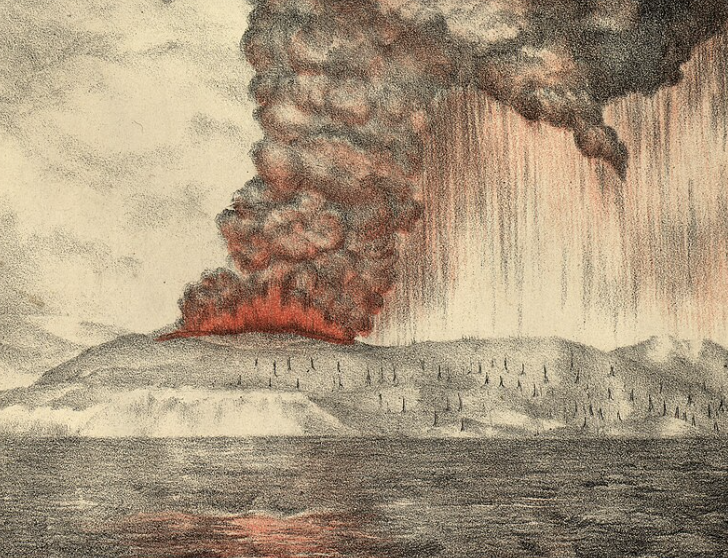

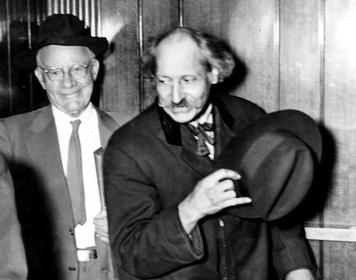




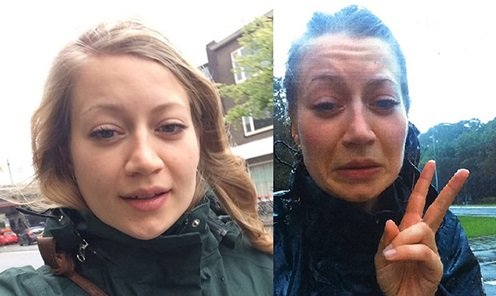



Leave a comment